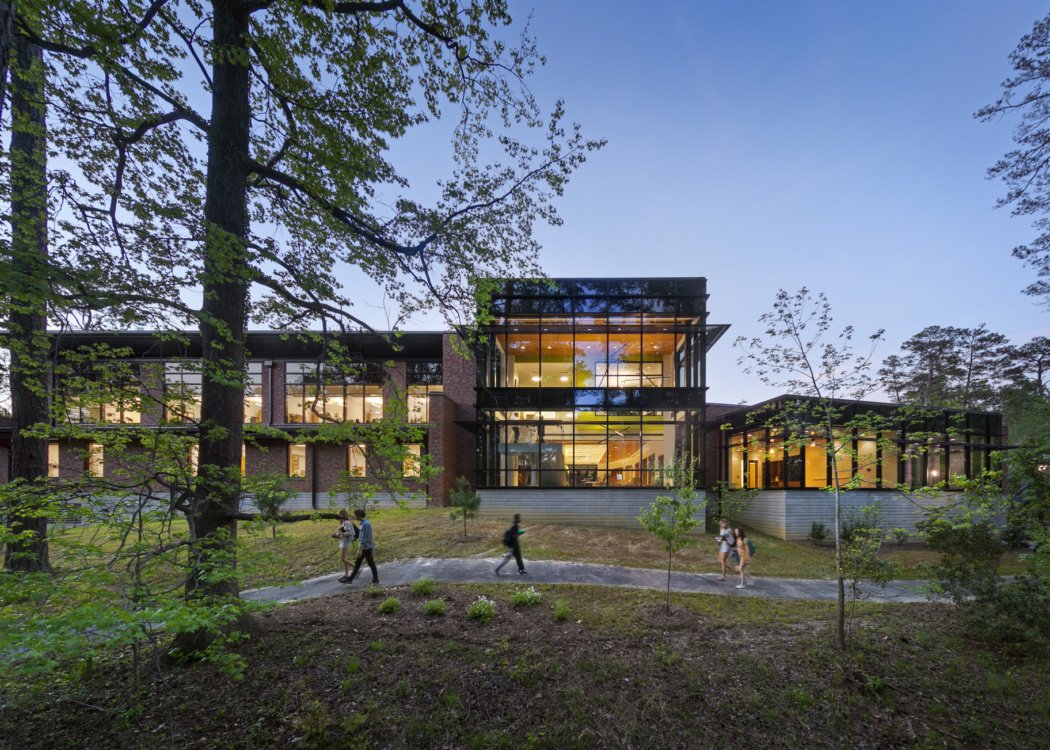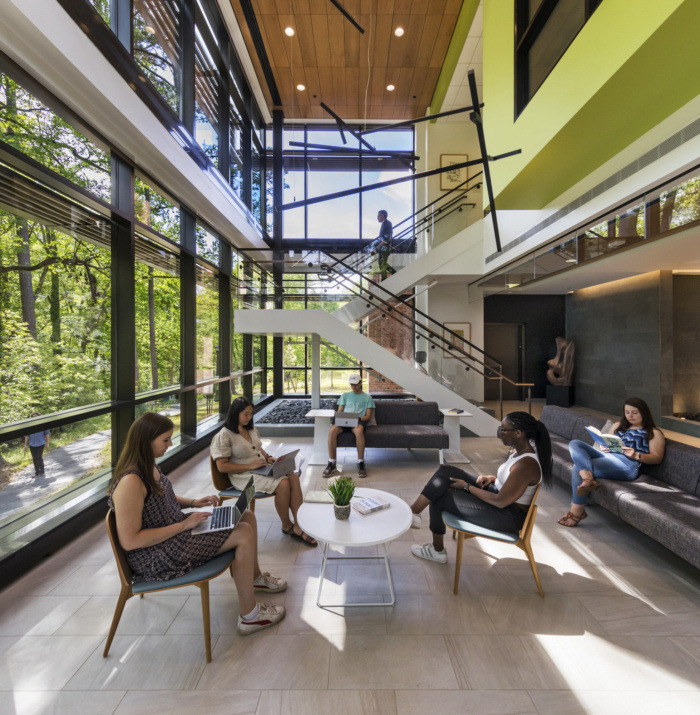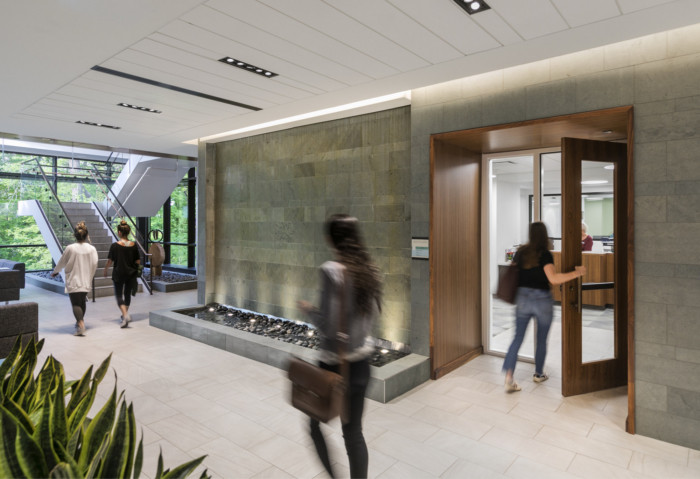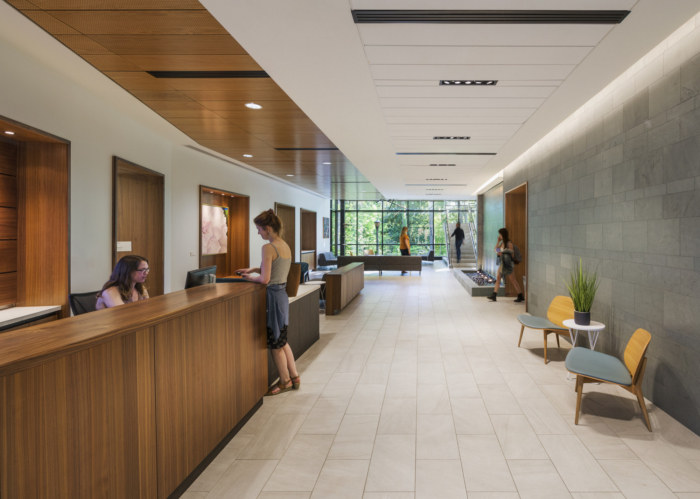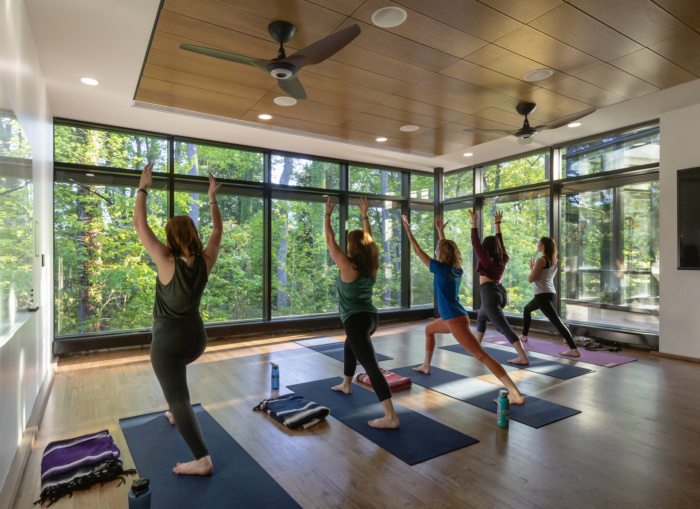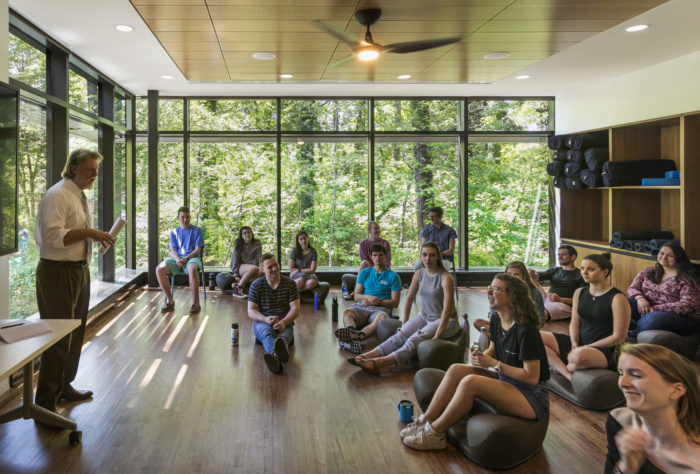College of William & Mary – McLeod Tyler Wellness Center
EYP designed the McLeod Tyler Wellness Center at College of William & Mary in Williamsburg, Virginia.
The McLeod Tyler Wellness Center is a beacon for health and wellness in an oasis-like setting, where the William & Mary campus community can discover new ways to address health and stress while learning positive lifelong habits. Housing the Student Health Center, Counseling Center, Office of Health Promotion, Campus Recreation’s Wellness activities, and the Center for Mindfulness and Authentic Excellence, the Center’s goal is to inspire students to take accountability for their health by actively seeking activities and methods that invigorate the mind and body.
The siting was very deliberate, located in the center of the campus, where most students walk by multiple times daily. The design celebrates the surrounding natural landscape while incorporating natural stone and a variation of the campus’s brick vernacular pattern to complement neighboring buildings and pay homage to the College’s traditions. The project site is adjacent to a protected natural woodland with a stream and the scenic Crim Dell.
The central design concept of framing the landscape to act as the building’s wall paper came from two primary sources: noted architect Philip Johnson’s Glass House; and the iconic garage in the movie Ferris Bueller’s Day Off, where Cameron’s father housed his prized Ferrari – a story that is shared on campus tours to date. In key areas along the south facade, large floor-to-ceiling windows provide expansive views to nature and allow abundant daylight to enter the spaces. Outdoor views serve as positive distractors for visitors to the health center, the counseling center, and other spaces. The design team incorporated biophilic elements throughout with strategic use of natural patterned fabrics, stone, wood, and a large water feature along a wall at the lobby. Designers also chose a color palette with soothing earth tones to reinforce the Center’s connection to nature and to contribute to the calm, restorative environment.
A safe, inviting, and modern contribution to a campus traditionally influenced by Georgian architecture, the design importantly centralizes and integrates all major wellness facilities and programs. The building’s character and scale were thoughtfully and collaboratively designed to provide a welcoming presence, so students feel encouraged to enter and experience wellness opportunities. Though the campus’s goal to create a paradigm shift to integrated wellness that is holistic and preventative is ongoing, the physical improvements and strategic design of this integrative facility are clearly making a difference when it comes to students’ use of the building.
The building’s full height windows look out into the university’s wildflower refuge. Outdoor features include a meditation labyrinth, life-size Zen garden, and social wellness patio equipped with Adirondack chairs. Inspired by the College’s role in the Charter for Compassionate Schools, a compassion garden with large rocks where students may sit and interact was installed in the front of the building. Several meditation alcoves are also sprinkled throughout the building. Designed to be comfortable for students anywhere on the neurodiversity spectrum, the spaces may be used without reservations while the building is open. Entering the building is a positive step, an affirming statement about students taking care of themselves, and that targets and overcomes the stigma often associated with seeking help.
Design: EYP
Photography: David Sundberg

